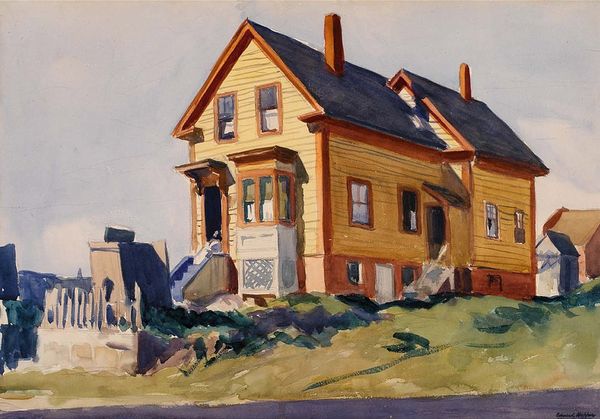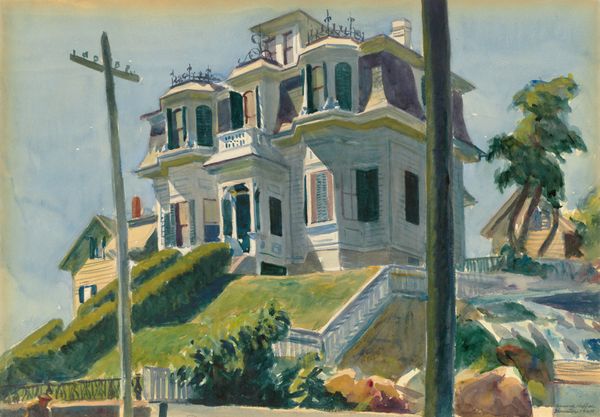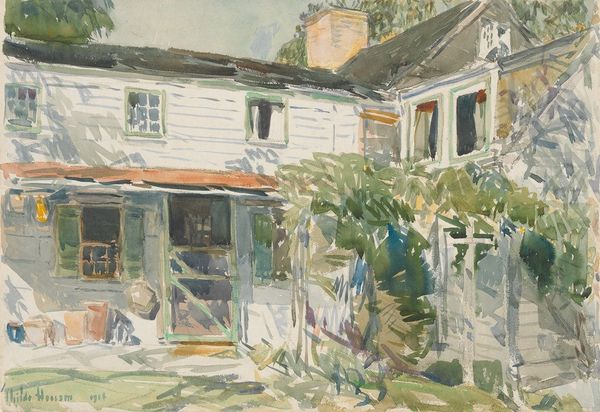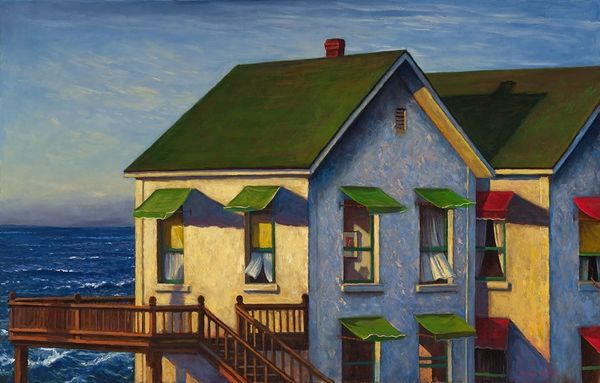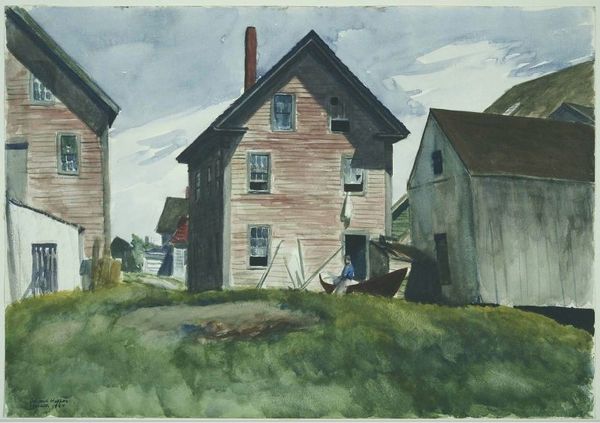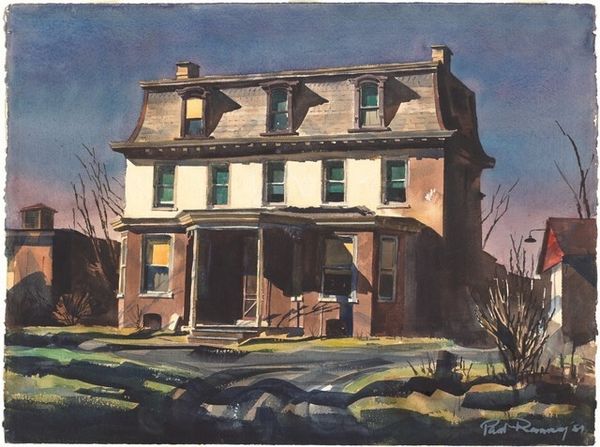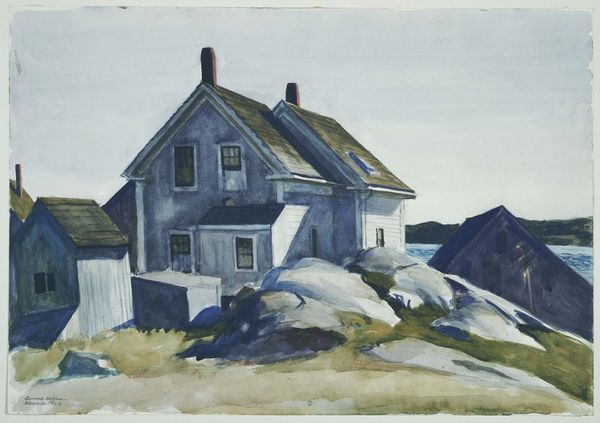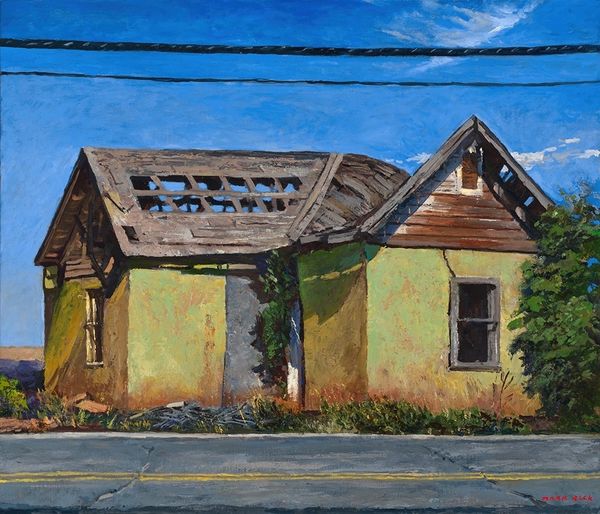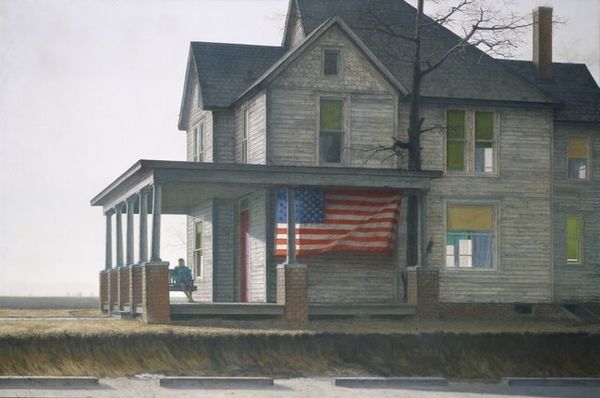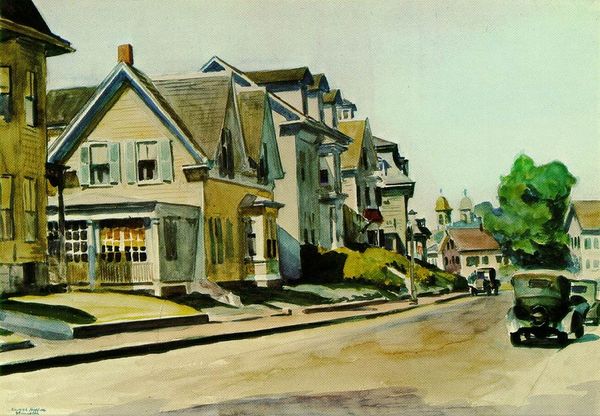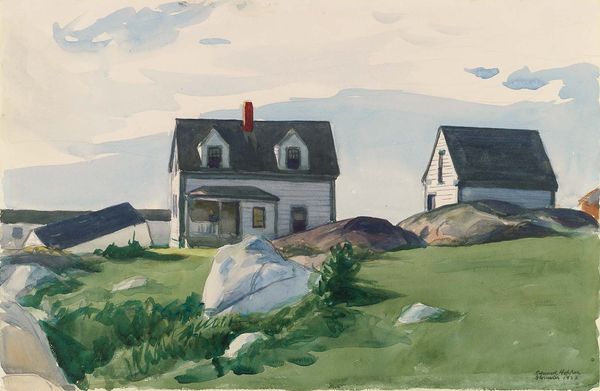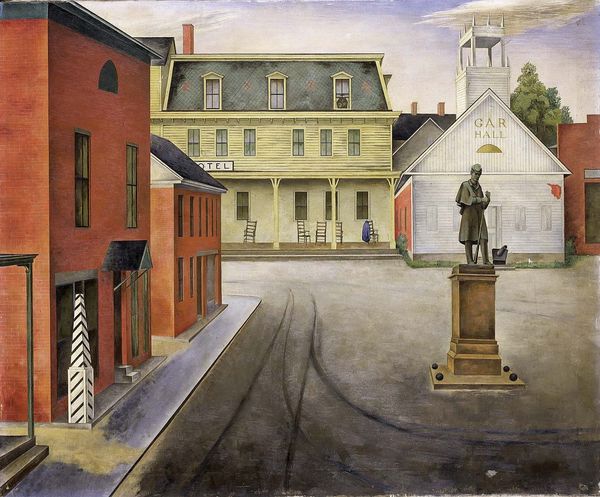
painting, oil-paint
#
painting
#
oil-paint
#
landscape
#
house
#
oil painting
#
cityscape
#
street
#
modernism
#
realism
#
building
Dimensions: 40.64 x 63.5 cm
Copyright: Edward Hopper,Fair Use
Editor: This is Edward Hopper’s "Adam's House," an oil painting from 1928. It’s got this unsettling calm about it; the strong light and shadow create such a starkness. What strikes you most about it? Curator: Initially, the composition grabs my attention. Note how Hopper’s deployment of geometric shapes—the triangular roofline juxtaposed with rectangular house planes—establishes a formal tension. Do you see how this tension destabilizes the representational image? Editor: I think so... it keeps it from being a simple, charming house portrait. What does the telephone pole add? Curator: Precisely! The telephone pole, a stark vertical element, bisects the scene and its function extends beyond mere representation. Semiotically, it underscores themes of modern alienation prevalent during that era. Observe its interaction with the angular geometry of the house. How do they converse? Editor: It feels like the rigid, modern pole is encroaching on the more traditional architecture. Almost like it's isolating the house. Curator: An astute reading! Now consider Hopper’s color choices. The muted palette – shades of white, gray, and subdued greens – evoke a feeling of austerity. This reduction, this visual paring down, isn't merely decorative. Editor: So the color is actively contributing to the overall feeling of isolation, not just passively depicting it? Curator: Exactly. It contributes structurally and emotionally, shaping the viewer's interpretation. Think of Hopper as meticulously crafting not just a scene but a system of visual signifiers designed to communicate specific, nuanced meanings. Editor: It's fascinating how much I missed focusing just on the scene, and how much more there is in the shapes and the color relationships. Curator: Agreed. Attending to these intrinsic qualities unveils a complex, deliberately constructed visual experience.
Comments
No comments
Be the first to comment and join the conversation on the ultimate creative platform.
